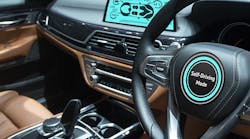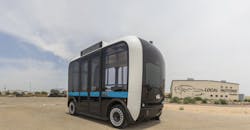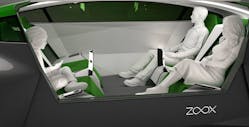The auto industry is racing to rebuild itself. It’s quickly realizing that the autonomous self-driving car is already here and is now teaming up with IC chip, communications, sensor, and software companies to come up to speed. The emphasis is now on getting the most out of digitization, artificial intelligence, machine learning, wireless and internet connectivity, and driverless self-thinking autos. This involves all major car makers including General Motors, Chrysler, Ford, Audi, BMW, Mercedes-Benz, Bentley, Rolls-Royce, Volvo, Nissan, Honda, Toyota, Kia, and even Tesla.
Who would have thought, not long ago, that U.S., European, Japanese, Korean, and other car makers would be teaming up with the likes of IBM, Intel, Delphi Automotive, Autoliv, Nvidia, Microsoft, Mobileye, Apple, Embark, Elektrobit, STMicroelectronics, Google subsidiary Waymo, and Uber? But that’s exactly what they’re doing, readying themselves for next-generation driverless and autonomous cars, buses, and trucks, by teaming up with these hardware and software companies.
The ability of a car to self-park itself is no longer a fancy high-end feature. Tesla cars feature “autopilot” driving. Uber has piloted self-driving taxis, and Local Motors has demonstrated the first 3D-printed self-driving vehicle—named “Olli”—that uses the advanced cognitive capabilities of IBM’s Watson computer.
Local Motors demonstrated the first 3D-printed self-driving vehicle that integrates the advanced cognitive capabilities of IBM’s Watson computer. (Source: Local Motors)
Sweden’s AutoLiv and Volvo developed a joint venture called Zenuity for autonomous driving and have linked up with Nvidia. Velodyne LiDAR, the leading supplier of LiDAR technology, is supporting Autoliv in the development of an automotive-grade LiDAR.
Silicon Valley’s Zoox aims to transform transportation by offering a Level 5, or completely driverless, mobility service. Working from innovative research devised by KTH Royal Institute of Technology in Stockholm, an all-electric drivetrain has been developed for its first prototype.
The car’s shape has been largely finalized, in preparation for the production of the chassis and bodywork. The vehicle is outfitted with lidar, radar, video, and ultrasonic sensors. It has an electric motor in each wheel, and was designed to be bi-directional: it could move equally well forward and backward prototype.
Zoox aims to transform transportation by offering a Level 5, or completely driverless, mobility service.
There’s more to the concept of an autonomous car that can be built and put on the market. Such cars must also be able to refuel themselves, service themselves, exist in an infrastructure that allows all this to happen, and, of course, be more than just reliable and safe. This is all in the software.
Even hardware is not completely foolproof. RF sensor communications has been shown to be unreliable in some cases, and can lose sensing signals or even provide incorrect data. This means hardware redundancy and independent software control.
According to many automotive and electronics technology experts, it is doubtful that the autonomous car concept will catch on soon. It may take many more years before such a car or other autonomous vehicle becomes a common sight on the road.
Would you want to be driving in front of an autonomous tractor-trailer barreling down the highway when some unknown hardware and/or software failure in the tractor-trailer occurs? I doubt it.
As you can see, the challenges involved in making an autonomous vehicle viable are many and very complex. It will take a lot more R&D to make this a useful reality.


